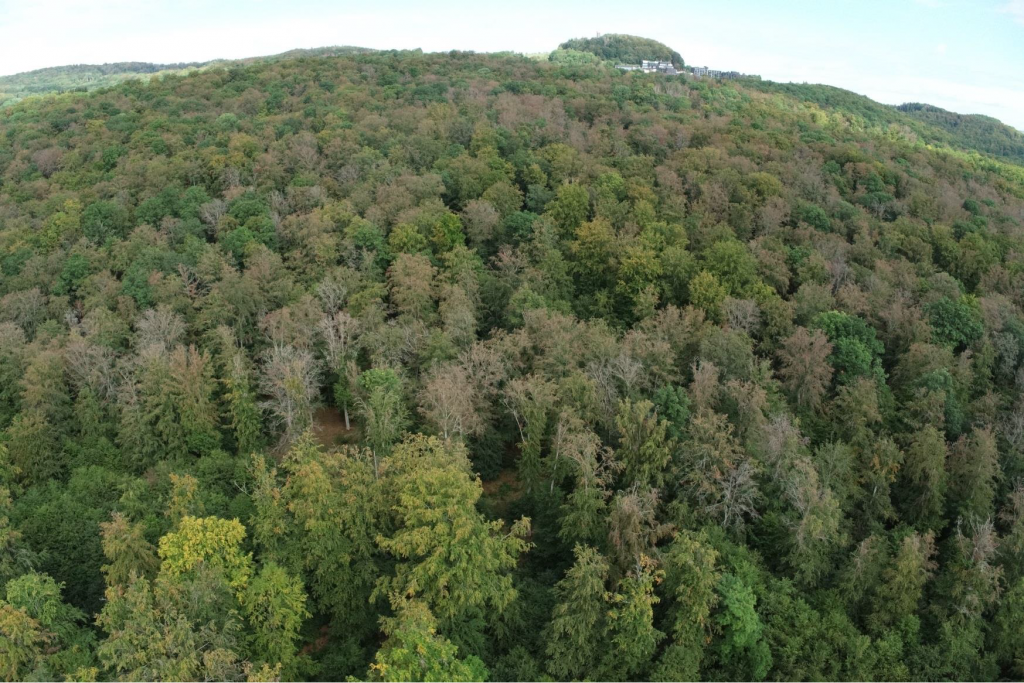Assessing individual and local scale forest vulnerability to mortality from the 2019 extreme drought in Central Europe
This project is investigating the response of European beech forests to an unprecedented extreme drought event that caused significant, and unexpected mortality and dieback across central Europe in order to develop new approaches for the assessment of forest health and to predict the vulnerability of forests to future drought events. Professor Alistair Jump is leading the study, funded by the Natural Environment Research Council (NERC), in collaboration with Professor Danny Donoghue at Durham University and the Rhӧn Biosphere Reserve The project will run from August 2020 – July 2021.

Climate change is having significant impacts on the health of trees and forest ecosystems globally. For many regions, the frequency and intensity of drought events are predicted to increase under future climate scenarios. Consequently, widespread reductions in forest growth and increases in the extent and severity of die‐off events are anticipated as the climate warms and drought events become more frequent and intense. While the effects of drought events have often been observed at the hot and dry margins of species distributions, alarmingly, recent drought‐linked die‐off has occurred within the core area of species ranges where climatic conditions should be most favourable. Global models of vegetation growth have difficulty predicting die-off events in areas considered to be generally climatically suitable for the species, bringing considerable challenges in identifying which forests are vulnerable to droughts and how that vulnerability varies across landscapes and individual trees. To address this problem, we urgently need detailed data from individuals that die and those that survive intense drought events from within the core regions of the species distribution. However, predicting when and where intense drought events will occur is extremely challenging, making such responsive data collection very difficult.
In 2019 an intense drought event impacted forests in Central Europe. In the Spring of 2020, it became clear that this drought event had caused widespread, yet highly variable die-off within the core area of the range of the European beech tree – one of the most widely distributed broadleaf trees on the continent and a key forestry resource. The extraordinary response of the European beech forests in Central Europe to the intense drought in 2019 now provides us with an exceptional opportunity to better predict which forest areas are at an increased risk to drought events within the core of this species range. By acting rapidly in the wake of this extreme event before the crowns of the now-dead trees begin to lose branches and collapse, we can collect data from individual trees that died and survived the 2019 drought event to determine how tree size (e.g. diameter, height, crown size), stand competition (e.g. tree density, size distribution), historical growth patterns (determined from tree rings), and local terrain characteristics (e.g. slope, aspect, curvature) influence the vulnerability of trees to drought-induced mortality. We will pair detailed field measurements with equally detailed drone-captured hyperspectral and LiDAR data and satellite remote sensing data that will enable us to assess tree heath and forest structure from above the forest canopy. Effectively exploiting this short window of opportunity to assess the impact of the 2019 drought will enable us to develop new approaches for the rapid assessment of forest health and to predict vulnerability across large areas of forest.
The data collected in this project will allow us to make realistic local forecasts of tree vulnerability to drought and develop remote sensing methods to support the validation of these forest health forecasts. The conditions that have resulted following the drought event in Central Europe in 2019 are extremely rare and so this project provides a major opportunity to drive much needed improvements in remote sensing of forest health and deliver the knowledge and data needed to improve global models of forest growth under ongoing climate change.